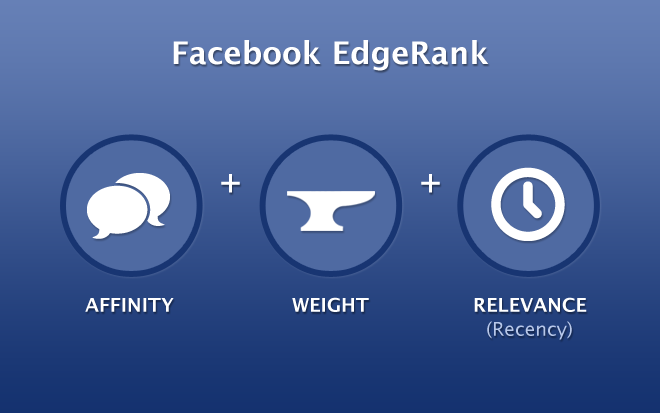
Social Plugins Etc.newly Updated Product With Great Bonuses. Hot Social Media Topic. Easy To Sell
" data-hasqtip="0" aria-describedby="qtip-0">Facebook has continually adapted to optimize the content that users see in their news feeds. In order to create a news feed that is relevant to the user, the social network recently introduced a few changes to their alogrithm For businesses and professionals concerned about their online reputation management, these changes are important to note. A solid online reputation management involves consistent updating of your social-media accounts so that these profiles rank well in Google search results.Each time that users access their Facebook accounts, there are approximately 1,500 different stories with the potential of popping up in their newsfeeds. The Edgerank system – Facebook’s own algorithm – examines these posts and cuts them down to about 300 stories that will appear to the user. Going forward, Facebook will place further emphasis on the post’s weight and affinity.
Posts that attract a number of engaged users on Facebook, especially photos, hold a significant amount of weight. Meanwhile, affinity determines the user’s past interactions with a page or fellow user. If the user interacts with the account more often, they will regularly see future posts from that page or person.
First up, Facebook has introduced the idea of story bumping.
When users scroll through the news feed, they typically only read 57 percent of the shown posts. However, story bumping will promote older stories and the next time they check their news feed. Even though increased competition may be an issue, businesses will now be able to reach more users.
After testing this new algorithm, Facebook observes that users will now view 70 percent of posts, compared to the original 57 percent.
Non-sponsored posts received the bulk of user engagement in the first few minutes after being posted. Successful (and non-sponsored) posts have much better odds of sticking around users’ news feeds for a longer period of time. This bumping feature should benefit businesses and organizations, provided that they are regularly posting high-quality content.
Secondly, Facebook has announced the concept of “last actor.”
“Last actor” takes into consideration the last 50 actions of a user on Facebook. Its purpose is to understand the user’s frame of mind and serve the user more relevant content so that the user remains engaged with the site.
The world’s largest social network has experienced a slight decrease in market share as users are flocking to other social platforms, fed up with sponsored content and the posts of their own friends. In an effort to maintain its standing, the site must adapt to the user’s needs.
For Facebook, the goal now is for this social-media channel to be a “personalized newspaper” for its users. Their first plan of action: to adjust the algorithm to determine what users will see when they log in. Quite simply, posts appear towards the top of the news feed if they are receiving a significant amount of comments and Likes.
The results were promising for those who value user engagement. According to Facebook, engagement for “pages” – which could be from an organization, brand or public figure – were up 8 percent. Among regular users, the increase was 5 percent.
For businesses, you must be actively communicating with your core consumers on a variety of social-media platforms. Not only will this develop necessary relationships and drive sales, but it will also be extremely pleasing to Google as its algorithm calculates search results for you and your business. No matter how many times Facebook tweaks its algorithm, superior content - published on a consistent basis - will always be king.
Author Bio
Blake Jonathan Boldt is a content strategist for Reputation Advocate. He provides writing, editing, social media and content strategy services for both domestic and international clients. His articles have been featured in numerous magazines, newspapers and digital media outlets.


